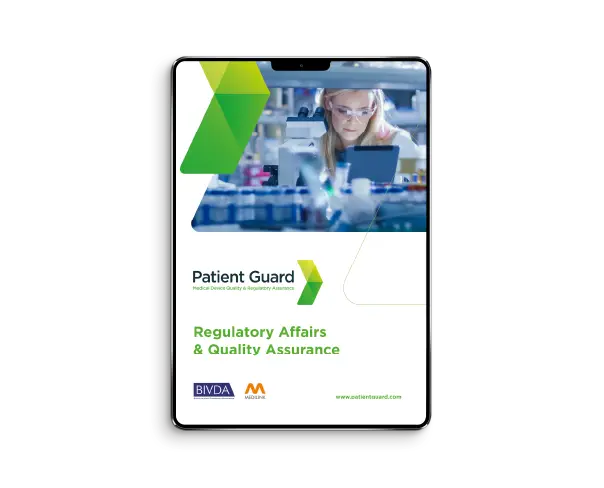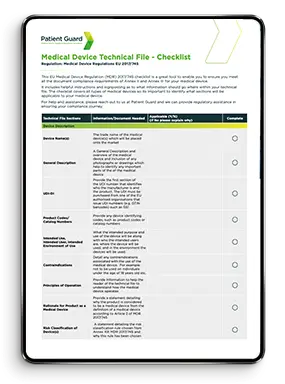Introduction
IEC 62366-1 is an international standard that focuses on usability engineering for medical devices. It outlines a process for identifying and mitigating potential use-related risks to ensure devices are safe and effective for users. The standard emphasizes the importance of understanding how users interact with devices and integrating human factors engineering throughout the design process. Compliance with IEC 62366-1 helps manufacturers reduce user errors and improve overall device safety and performance.
Unpacking IEC 62366-1: A Foundation for Usability Engineering
At its core, IEC 62366-1 is more than just a set of guidelines—it’s a framework designed to optimize the interaction between users and medical devices. Formulated by the International Electrotechnical Commission (IEC), this standard outlines a systematic approach to usability engineering, emphasizing the importance of understanding user needs, mitigating usage risks, and iteratively refining device designs based on user feedback.
The Importance of User-Centred Design
Patient Safety Redefined:
Beyond merely complying with regulatory requirements, adherence to IEC 62366-1 represents a commitment to patient safety. By proactively identifying and addressing potential use errors, medical device manufacturers can significantly reduce the risk of adverse events and enhance overall patient outcomes.
Elevating User Experience
In today’s healthcare landscape, where efficiency and usability are paramount, medical devices must seamlessly integrate into clinical workflows. By incorporating user-centred design principles, such as intuitive interfaces and ergonomic form factors, manufacturers can empower healthcare professionals to focus on patient care rather than grappling with complex device interfaces.
Navigating Regulatory Landscape
Compliance with IEC 62366-1 is often a prerequisite for regulatory approval in many jurisdictions worldwide. By embracing usability engineering early in the design process, manufacturers can streamline the regulatory pathway, accelerating market access while ensuring the safety and efficacy of their products.

Key Principles in Action: From Theory to Practice
User Requirements Analysis
Central to the success of any medical device is a comprehensive understanding of user needs and preferences. Through methods such as contextual inquiry, task analysis, and user feedback surveys, designers can glean valuable insights into the nuanced workflows and pain points of end-users, informing the design process from inception to validation.
Risk Management Integration
Usability engineering and risk management are inherently intertwined, with each informing and augmenting the other throughout the product lifecycle. By conducting thorough risk assessments and usability testing, manufacturers can identify and mitigate potential hazards, ensuring that devices are not only functional but also safe and user-friendly.
Iterative Design and Validation
Recognizing that usability is not a static attribute but rather an evolving facet of design, IEC 62366-1 advocates for an iterative approach to device development. By soliciting feedback through usability testing, observation, and user trials, designers can refine and validate their prototypes, iteratively improving usability while minimizing usage risks.
Practical Implementation Strategies
Cross-Functional Collaboration
Effective implementation of IEC 62366-1 necessitates close collaboration across multidisciplinary teams, including designers, engineers, clinicians, and human factors specialists. By fostering a culture of collaboration and knowledge-sharing, organizations can leverage diverse perspectives to optimize device usability and safety.
Usability Testing Protocols
Rigorous usability testing protocols are essential for evaluating device performance in real-world scenarios. Whether through simulated use studies, cognitive walkthroughs, or heuristic evaluations, manufacturers must systematically assess device usability and iterate on design improvements based on empirical evidence.
Documentation and Compliance
Robust documentation is critical for demonstrating compliance with IEC 62366-1 and regulatory requirements. From maintaining a usability engineering file to documenting risk management activities and validation results, meticulous record-keeping ensures transparency and traceability throughout the design process.

Conclusion: Toward a User-Centric Future in Medical Device Design
As we navigate the complexities of modern healthcare, the imperative of user-centered design has never been more pronounced. IEC 62366-1 serves as a beacon, guiding medical device manufacturers toward a future where patient safety and user experience converge seamlessly. By embracing usability engineering principles, organizations can not only mitigate usage risks and expedite regulatory approval but also foster innovation and enhance the quality of care delivery. As technology continues to reshape the healthcare landscape, the principles espoused by IEC 62366-1 will remain indispensable, driving continuous improvement and ultimately improving outcomes for patients worldwide.
FAQs
Usability engineering focuses on designing medical devices that are safe, effective, and easy to use. It evaluates how users interact with the device to minimize risks caused by user errors during operation, installation, or maintenance.
Why it matters: A well-executed usability engineering process ensures patient safety, regulatory compliance, and a better user experience.
IEC 62366 is an international standard for usability engineering in medical devices. It outlines a systematic process for identifying, analyzing, and mitigating risks associated with device use.
- IEC 62366-1: Specifies usability engineering requirements.
- IEC/TR 62366-2: Provides guidance on applying these requirements.
Key insight: Compliance with IEC 62366 is required under regulations like the EU MDR and FDA human factors guidance.
The usability engineering process under IEC 62366 involves:
- Define the Intended Use: Identify the device’s purpose, users, and environments.
- Identify Use Errors: Determine potential user errors and associated risks.
- Establish Usability Specifications: Define usability goals for safety and performance.
- Perform User Testing: Evaluate device design through formative and summative testing.
- Iterate and Validate: Refine the design to reduce risks and validate usability.
Pro tip: Early involvement of end-users in the design process leads to better outcomes.
Usability engineering complements ISO 14971 (risk management) by focusing specifically on risks arising from device use. This includes:
- Identifying Hazards: Use-related risks such as misinterpretation of instructions or incorrect device operation.
- Risk Mitigation: Designing intuitive interfaces, clear labeling, and effective training materials.
- Residual Risk Assessment: Ensuring usability-related risks are reduced to acceptable levels.
Key takeaway: Integration with risk management ensures a holistic approach to device safety.
All medical devices that involve human interaction require usability engineering, especially:
- High-Risk Devices: Infusion pumps, defibrillators, surgical robots.
- Home-Use Devices: Blood glucose meters, nebulizers, and wearable monitors.
- Digital Health Products: Mobile apps and software interfaces.
Key insight: Usability engineering is critical for devices used by non-professional users, such as patients or caregivers.
Yes! Patient Guard provides comprehensive support for usability engineering, including:
- Developing usability engineering files in compliance with IEC 62366.
- Conducting use-error analyses and usability risk assessments.
- Designing and executing formative and summative usability testing.
- Preparing documentation for regulatory submissions under EU MDR or FDA requirements.
Why choose Patient Guard: With extensive experience in usability engineering and risk management, we help ensure your device is safe, user-friendly, and market-ready.



